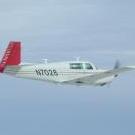Fuel Selector Woes
-
Members Online
- springs11
- DHenderson
- Greg Ellis
- TCC
- mmcdaniel33
- LANCECASPER
- Hawth200
- Sixstring2k
- Aerospace
- Glen Davis
- IvanP
- cferr59
- 67 m20F chump
- 7.Mooney.Driver.0
- 00-Negative
- FlyingScot
- Flyler
- Fly Boomer
- Rotorhead
- Aviationist
- Shiroyuki
- GeeBee
- acekng1
- Ivan
- N201MKTurbo
- takair
- Jaystew324
- Lax291
- Ascholl
- daytonabch04
- Crawfish
- Jake@BevanAviation
- phxcobraz
- AdamJD
- WilliamR


Recommended Posts
Join the conversation
You can post now and register later. If you have an account, sign in now to post with your account.